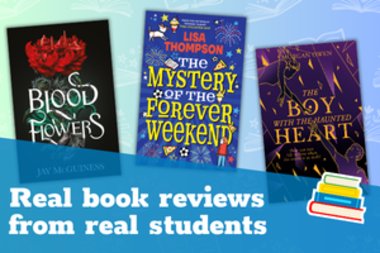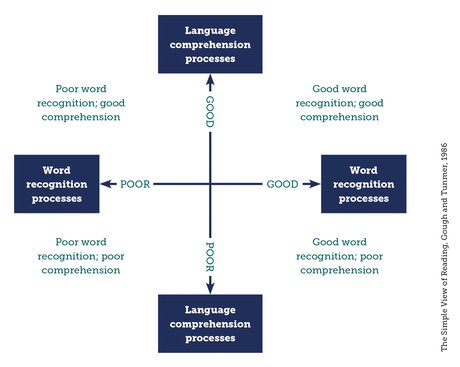The Reading Framework
The Reading Framework (DfE, July 2023) provides guidance on how to teach reading from the Early Years to Key Stage 3. Based on evidence from research, expert contributors, teachers’ classroom experiences, assessments, and from the English Hubs programme, it aims to be practical document explaining key aspects of reading including Systematic Synthetic Phonics, fluency, language comprehension, and reading for pleasure.
At its heart, the reading framework is concerned that every child should be able to read and view themselves as a reader. It recognises the significant role reading plays in growing children’s vocabularies and that children who read recreationally expand their world knowledge. Drawing on research from The Organisation for Economic Co-operation and Development (OECD) it points to reading for pleasure as a mediator in economic and social inequality:
Reading practices can play an important role in reduction the gap between the reading proficiency score of students from different socio-economic backgrounds.
OECD (2002) Reading for change. Performance and engagement across countries.
The reading framework: a tool for schools and trusts
The reading framework is a useful starting point for schools and trusts looking to evaluate their reading provision, as in addition to explaining the key aspects of what reading is, it provides several short audit tools to scrutinise current reading provision.
For schools interested in taking their analysis of reading further, we’ve selected the following aspects from the report adding signposts to further support.
A Conceptual Model: The Simple View of Reading
The Simple View of Reading (Gough and Tunmer, 1986) is used in the reading framework as a model for describing the processes involved in reading as two dimensions: word reading (decoding), and language comprehension.
In describing the model, the reading framework recognises that language comprehension does not refer to reading itself but to the way in which we make sense of words, sentences and the wider language we hear. Consequently, spoken language and how we use it to talk about stories and texts is included in this dimension.
Word reading (decoding) is described as reading unfamiliar words by blending the sounds that correspond to letters and reading familiar words accurately ‘at a glance’ without overt sounding. This definition includes the skills taught through Systematic Synthetic Phonics but also draws on aspects of fluency that are related to reading with pace and accuracy.
The reading framework notes that once children can decode, their language comprehension is driven by the amount they read as well as the opportunities they have to talk about their reading. It goes on to note that thinking about and discussing texts enhances their vocabulary and that reading widely at home and at school establishes them as readers.
Read and Respond
The simple view of reading is central to the English programme of study for reading in the national curriculum. Read and Respond titles created for key stage 1 include lessons on word reading (decoding) and comprehension.
Choosing and Organising Books: Book Corners and Libraries
The reading framework includes advice on setting up book corners and libraries that is of interest to teachers in all phases. It stresses that the books themselves should be the focus rather than the décor of the space. This is not saying that toys and props associated with the story should not be included, or that teachers should not create imaginative book corners that include cushions, cargo nets, and tents, et cetera. Instead it is focusing practitioners on the quality of the books they include so that the book corner is driven by well-chosen, high-quality books and stories. Consequently, whether they are seated on a bench, in a tent or an imaginary castle should not really matter; they will be enjoying the books they read and share.
Also included is advice on the range of books to include such as fiction, non-fiction, illustrated texts, classics, recent publications and other books by the author of the current class reader. It is suggested that the decodable books children are using to learn to read, should be stored in a separate area to the book corner. By doing this, the focus on the book corner as a place of enjoyment is maintained. It should be noted that the reading framework makes clear that banded books from multiple publishers that may not follow the order of teaching in the school’s phonics programme should be avoided for early learners.
Furthermore, when advising teachers how to display the books in their book corners, the reading framework notes that bookshops and public libraries do not use coloured book bands but instead make their stock attractive, for example by displaying books with the cover artwork facing outwards and placing books of particular interest at eye-level.
Interestingly, the reading framework does not directly advise against book banding for older pupils. Instead it reminds teachers that some children may feel embarrassment at being on a lower band than other children in the class, and that restricting children’s choices to only books from their band can reduce their enjoyment. Book banding then can continue to be a way of scaffolding readers as they build fluency and stamina, but storing these books in another area, as done with the decodable books, and encouraging children to select books from the book corner seems the most balanced way of ensuring they read for pleasure and instruction.
The framework suggests that teachers think of their book corner as a mini library that all children in the class should be able to spend time in. It should be regularly refreshed to maintain the children’s interest and that using stock from the school’s main library is a good way to ensure this. Using the school library stock is certainly an effective way to manage the costs of establish high quality book corners across the school. Using the commission from book fairs is also a cost-effective way to ensure book corners are well stocked and regularly refreshed.
The reading framework also suggests that teachers should use their local library and Schools Library Service to learn more about children’s literature and access programmes and schemes that will help develop children as readers beyond school.
Scholastic Book Fairs
Scholastic Book Fairs are a way of inspiring and exciting children by bringing books into the heart of the school with a pop-up school book shop!
Developing a Reading for Pleasure Culture: Storytimes and Book Club
The reading framework includes advice for story times in Reception and Key Stage 1 and reading aloud to pupils in Key Stage 2 and 3. Timetabling these events is seen as a priority even in Key Stage 2 where it is suggested that teachers read aloud to their classes at least four times a week for around 20 minutes each time.
Creating a spine of books to read aloud during story times is recommended. Within this spine, there should be stories that: help children connect with who they are; help them to understand the lives of people whose experiences and perspectives may be different to their own; and that extend their vocabulary.
In appendix 4, there is advice on how to read aloud effectively by preparing for the story time sessions including thinking about how to use your voice, the importance of pauses, clarifying word meanings and making asides as you read.
Book Club is introduced in the report not as an extra-curricular activity, but as protected time for teachers to recommend books for pupils to read at home and during their independent reading sessions. It is at least 20 minutes each week where children can choose their books with the guidance of a knowledgeable teacher-reader, from the recommendation of a peer or through their own growing understanding of the books and authors they want to read. Book club recognises that some children will have limited or no access to books at home, and so making time to find and share books in school is vital for ensuring that every child becomes a reader.
Pie Corbett’s Reading Spine
Pie Corbett’s Reading Spine is a core of books that create a living library inside a child’s mind. It is a store of classics and essential reads that help children engage at a deeper level and enter the world of the story.
What good readers do
The reading framework explains that good readers understand, or comprehend, what they read. They make connections to their prior learning, and through their continued reading learn new information to add to their stores of knowledge. Being able to decode words ‘at a glance’ is essential to this process – explaining the centrality of phonics in the framework.
Linking back to The Simple View of Reading, the reading framework refers to comprehension not in terms of a set of skills but as the ability of children to build mental models as they read. This concept is clarified in appendix 9 as the way that readers create an image in their mind of what they read. In doing this, readers activate existing background knowledge, vocabulary knowledge, their understanding of sentences and their understanding of text structure. This then enables them to undertake processes such as making prediction and inference and monitoring their own understanding.
Reading is seen as an essential element in gaining knowledge. A reader uses their background knowledge to access a text but is frequently gaining new knowledge as they read. For teachers this means they must learn to unlock children’s prior understanding whilst facilitating the child’s understanding of new content.
Some of this will happen through discussions about the shared story time text and conversations in Book Club about the books children are reading or might want to read. It also happens in explicit reading instruction, such as through the teaching of reading in English lessons. To support teachers with the teaching of reading in English lessons, the reading framework outlines key strategies such as the teacher reading aloud, pupils reading, the teacher modelling and explaining, and questioning. The reading framework also explores teachers’ use of extracts and whole texts, referring to the national curriculum at key stage 2:
Pupils should continue to have opportunities to listen frequently to stories, poems, non-fiction and other writing, including whole books and not just extracts, so that they build on what was taught previously…
The Daily Reading Lesson
The Daily Reading Lesson is a high-impact, low-workload reading model using research-based teaching strategies and resources from around the world. It helps teachers and leaders explore a range of approaches for teaching reading and how they can be combined for maximum effect so that children are taught how to make the mental models vital for understanding what they read.
Read and Respond
Read and Respond uses the best books to teach reading and writing. Every unit is linked to the national curriculum and utilizes techniques such as modelled reading, echo reading, questions and clarifying to ensure that pupils build detailed knowledge about the texts they read. Read and Respond units include retrieval practice to ensure that children activate their prior understanding as well as acquiring new knowledge as they develop their reading skills.

Rachel Clarke is an independent literacy consultant in Primary English and author of the Daily Reading Lesson
Similar Posts
-

Scholastic Book Fair Success Story
Yesterday, we heard from a small school in Ireland who ran their first book fair in 20 years.
-

Highlights from your Spring Book Fair range
Check out some of our top picks from the super Spring Book Fair range!
-

What Students Think: Real Reviews from Young Readers
From thrilling adventures to heartfelt stories, students from JESS Dubai School share their thoughts on recent reads.

